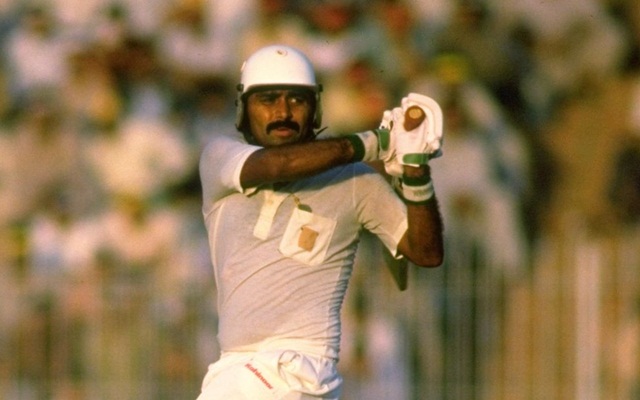3 Lesser known facts from the 1986 Austral-Asia Cup
Here we look at some of the lesser-known things recorded during the 1986 Austral-Asia Cup.
2 Min Read


Sri Lanka ODI. (Photo by David Munden/Popperfoto via Getty Images/Getty Images)
34 years to the date, Pakistan recorded a famous win against India in Sharjah as Javed Miandad smashed a six in the bowling of Chetan Sharma on the last ball when they needed four runs to win. It was the final of the first-ever edition of the Austral-Asia Cup.
Pakistan won the other two editions of the tournament as well which were played in 1990 and 1994 respectively. The series in 1986 featured Sri Lanka, New Zealand and Australia alongside the finalists India and Pakistan. A total of five matches only were played during this event including the final.
Here we look at some of the lesser-known things recorded during the 1986 Austral-Asia Cup:
3. Pakistan’s maiden win in a tournament final

Javed Miandad’s last-ball six sealed the Austral-Asia Cup for Pakistan who also ensured they won a tournament final for the first time. Before the 1986 Sharjah final, Pakistan featured in two ODI finals – 1985 Benson & Hedges World Championship final against India at the MCG which they lost by 8 wickets and the 1986 Asia Cup final against Sri Lanka hosted by Colombo which they lost by 5 wickets.
Pakistan did win the Tri-series involving New Zealand and Sri Lanka a month before the Austral-Asia victory. Till date, it remains as the only instance of a player hitting a six on the last ball of an ODI final to seal a victory for his team. However, this feat was replicated two years ago by India’s Dinesh Karthik.
Taking on Bangladesh during the 2018 Nidahas Trophy final in Colombo, the keeper-batsman finished the match with a six over the extra-cover region in the bowling of Soumya Sarkar when India needed five runs on the final ball.
2. Getting a bye for winning the Asia Cup

In this 5-team tournament, Sri Lanka got direct entry to the semi-finals while Pakistan, India and New Zealand came to the knockouts after featuring in the first round. Sri Lanka got into the semi-finals directly for winning the Asia Cup only a couple of days before the Austral-Asia Cup. India won the first edition of the Asia Cup held in 1984 but pulled out of the 1986 edition due to their experiences of previous Sri Lankan tour.
The Indian team toured Sri Lanka in 1985 for a 3-match Test and ODI series against the hosts. Sri Lanka won the Test series by 1-0 margin while the ODI series ended with a score-line of 1-1. As per India, the players suffered aggressive behaviour from the fans and also the umpire calls were favouring the home team. With India pulling out, the organizers replaced India with Bangladesh who won the 1984 South-East Asia Cup.
Sri Lanka lost the opening match of the Tri-series by 81 as they were bowled out for 116 in reply to Pakistan’s 197. However, in the final, the hosts chased down the target of 192 for the loss of five wickets with 16 balls to spare. During the Austral-Asia Cup, the Lankans faced India in the semi-finals. Sri Lanka posted only 205/9 despite batting full 50 overs. India chased down the target with three wickets and five balls to spare as both the openers struck hundreds.
1. Making it to the semis for losing by lesser wickets

With Sri Lanka getting a bye to the semi-finals, the remaining four teams faced off in the two matches of Round 1. The Indian team got the better of New Zealand whom they limited to 132/8 after the game was reduced to 44 overs-a-side. India chased down the target in 41.4 overs by losing seven wickets. On the following day, Pakistan got the better of Australia by 8 wickets. The Aussies, who batted first, posted 202/7 in their 50 overs which Pakistan chased down in 49.1 overs.
With their victories, India and Pakistan qualified to the semis while the 4th spot was to be decided between Australia and New Zealand. Usually in such scenarios, factors like a team’s run rate, net run rate or the wickets lost by the team are considered to decide higher-ranked team in the tournament. Had any of the three were considered, Australia would have landed up in the semis which unfortunately didn’t happen.
The team with a smaller margin of the defeat was used as a tie-break which meant New Zealand went through. The Kiwis lost their match by only 3 wickets while the Aussies by 8 wickets. The Blackcaps, who came into the tournament with a weaker side, got lucky and made it to the knockouts. However, in the semis against Pakistan, the New Zealand team were bowled out for only 64 and Pakistan chased it down without losing a wicket in 22.4 overs.
Download Our App